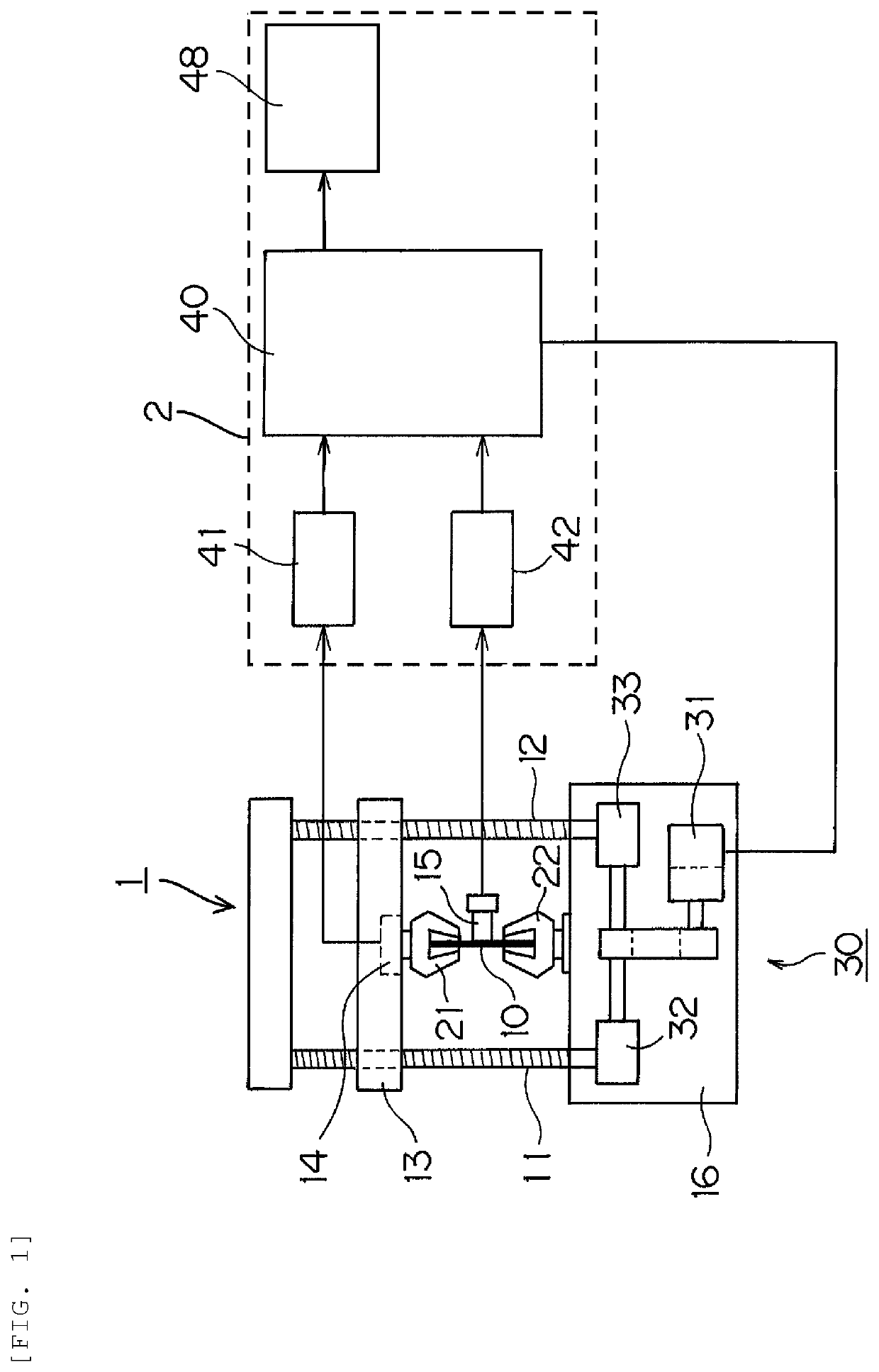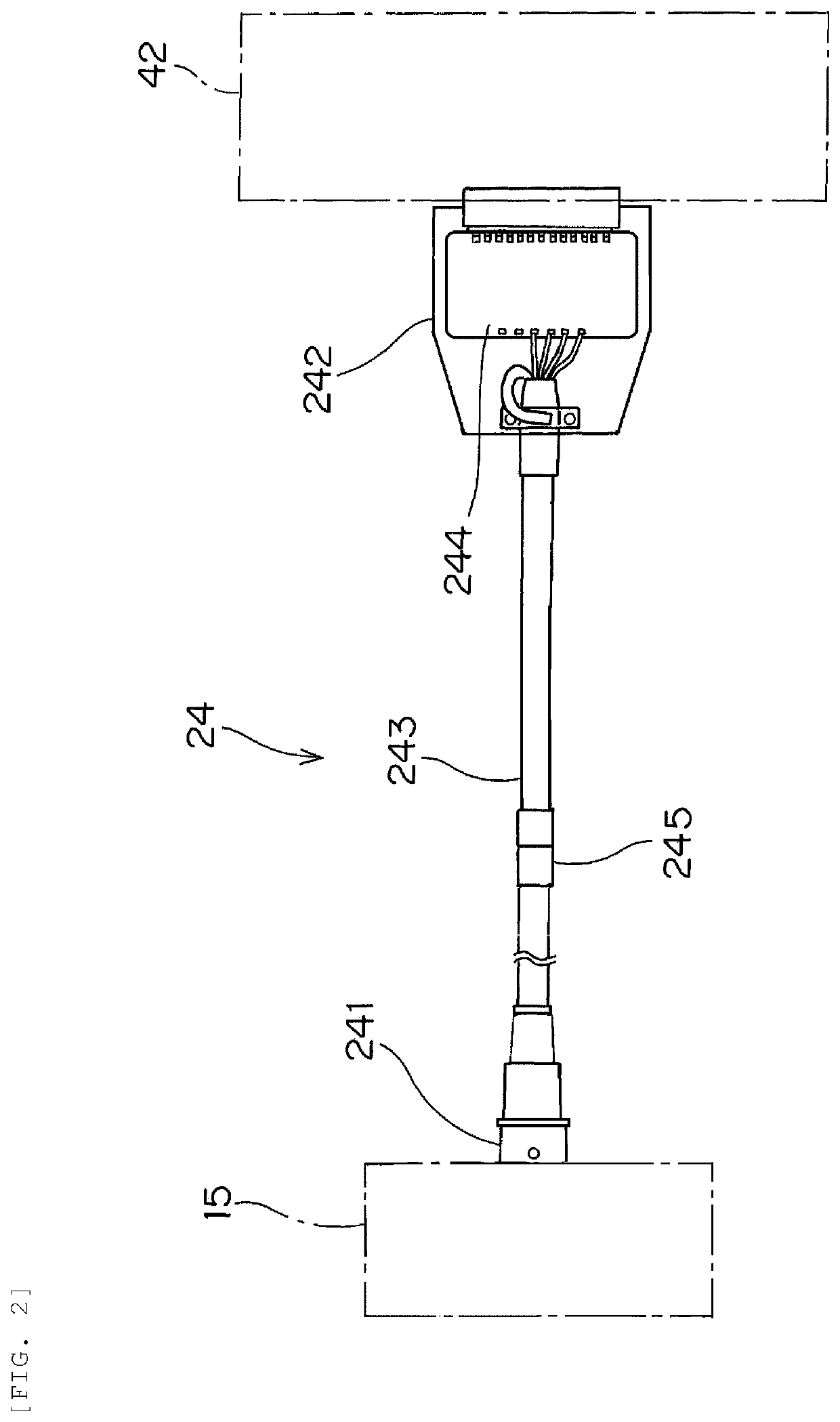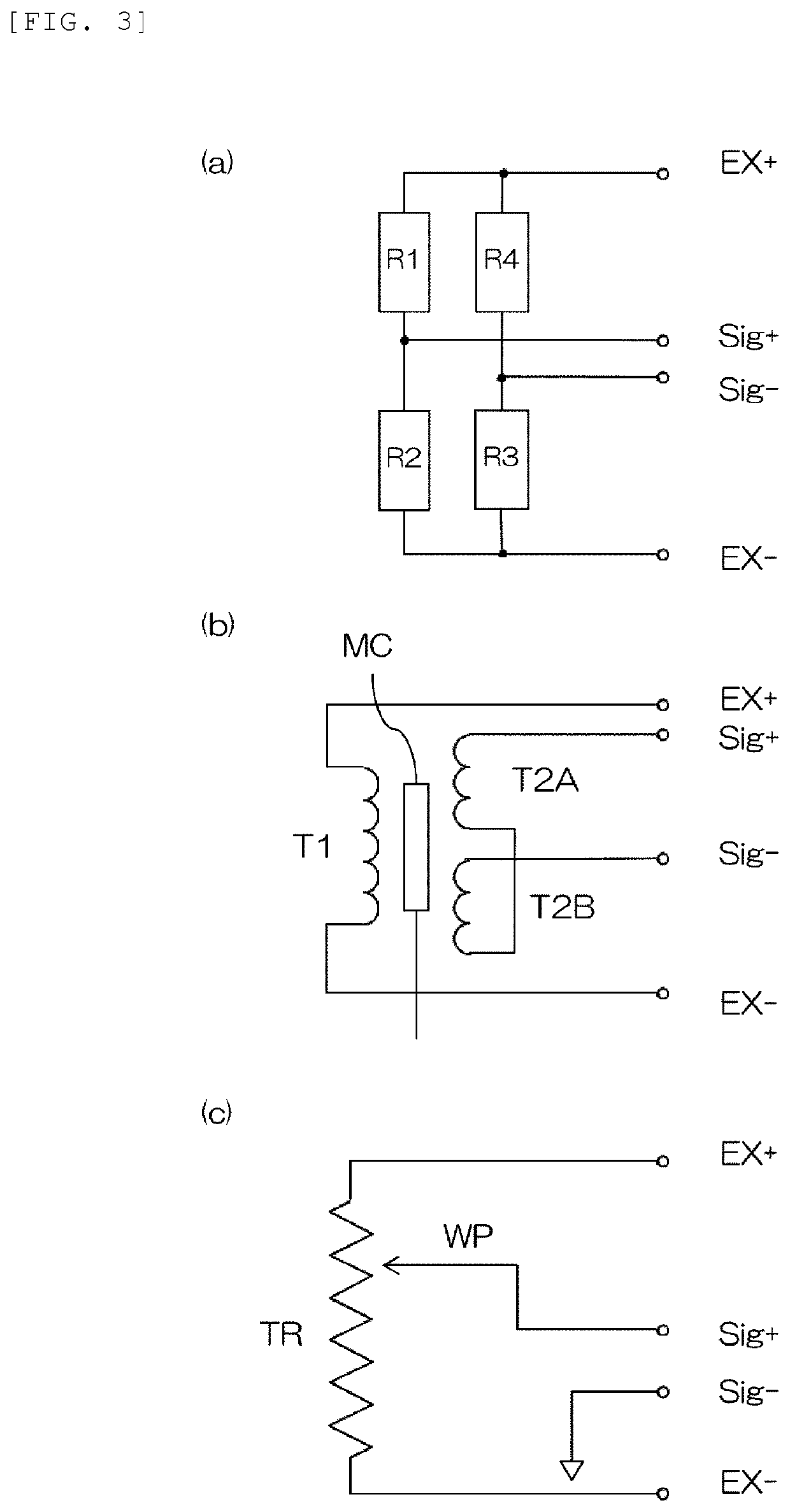Measurement device and material tester
a measurement device and material testing technology, applied in the direction of material strength using tensile/compressive forces, instruments, material analysis, etc., can solve the problems of insufficient resolution, high resolution of load cell, and the inability of the amplifier device of the displacement meter to use the load cell, so as to improve the accuracy of the test force and elongation value measured during material testing, improve the accuracy of the measurement of the gain on the sensor amplifier side, and improve the accuracy of the measured material testing
- Summary
- Abstract
- Description
- Claims
- Application Information
AI Technical Summary
Benefits of technology
Problems solved by technology
Method used
Image
Examples
Embodiment Construction
[0032]Hereinafter, an embodiment of the invention will be described with reference to accompanying drawings. FIG. 1 is a schematic diagram of a material testing machine.
[0033]A testing machine main body 1 and a control device 2 constitute this material testing machine. The testing machine main body 1 is provided with a table 16, a pair of screw rods 11 and 12 rotatably standing on the table 16 while facing a vertical direction, a crosshead 13 movable along the screw rods 11 and 12, a load mechanism 30 for giving a load to a test piece 10 as a measurement object by moving the crosshead 13, and a load cell 14 and a displacement meter 15 as detectors converting a change in physical quantity in the test piece 10 into an electric signal.
[0034]The crosshead 13 is connected to the pair of screw rods 11 and 12 via nuts (ball nuts, not illustrated). Worm reducers 32 and 33 of the load mechanism 30 are connected to the lower end portions of the screw rods 11 and 12, respectively. The worm red...
PUM
| Property | Measurement | Unit |
|---|---|---|
| physical quantity | aaaaa | aaaaa |
| force | aaaaa | aaaaa |
| displacement meter | aaaaa | aaaaa |
Abstract
Description
Claims
Application Information
 Login to View More
Login to View More - R&D
- Intellectual Property
- Life Sciences
- Materials
- Tech Scout
- Unparalleled Data Quality
- Higher Quality Content
- 60% Fewer Hallucinations
Browse by: Latest US Patents, China's latest patents, Technical Efficacy Thesaurus, Application Domain, Technology Topic, Popular Technical Reports.
© 2025 PatSnap. All rights reserved.Legal|Privacy policy|Modern Slavery Act Transparency Statement|Sitemap|About US| Contact US: help@patsnap.com



